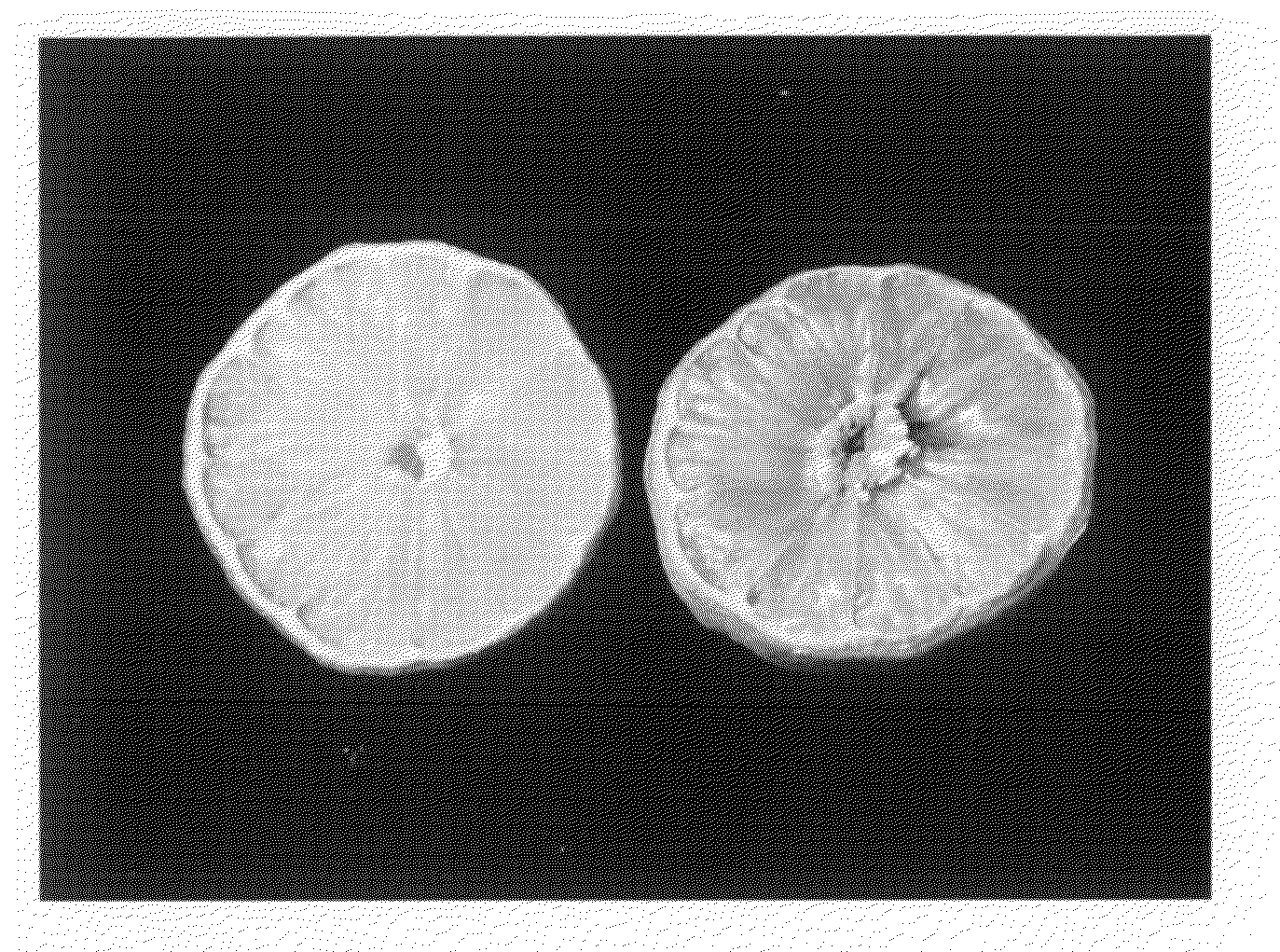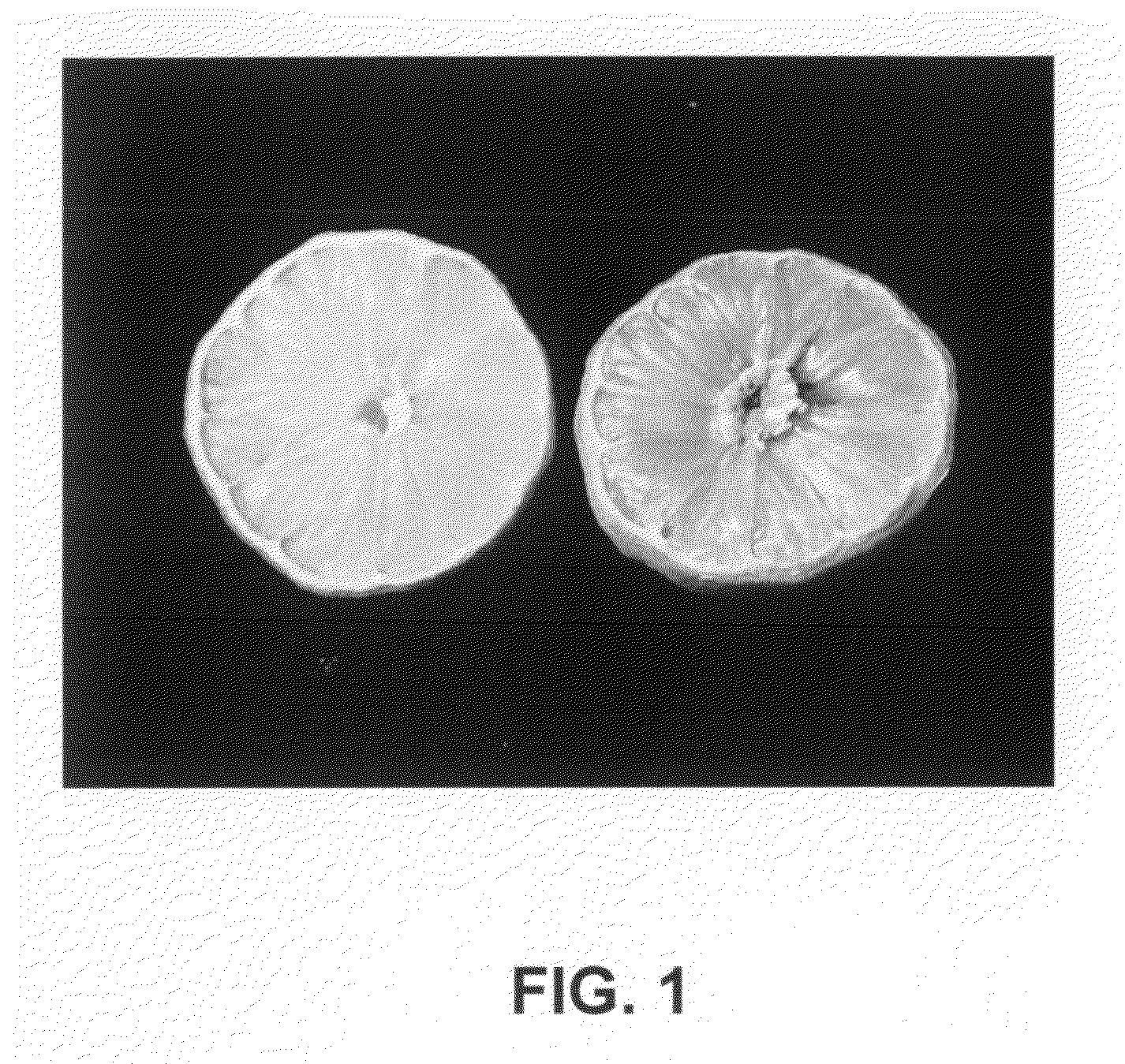Photocatalytic titanium dioxide nanocrystals
a titanium dioxide nanocrystal and photocatalytic technology, applied in the field of photocatalytic compositions, can solve the problems of food spoilage, adverse health effects, and contribute to spoilage, and achieve the effect of preventing oxidation of the substra
- Summary
- Abstract
- Description
- Claims
- Application Information
AI Technical Summary
Benefits of technology
Problems solved by technology
Method used
Image
Examples
Embodiment Construction
[0017]Titanium dioxide nanoparticles act as photo catalysts that facilitate the oxidation of organic and inorganic matter adsorbed onto their surface in the presence of light. These nanoparticles can be incorporated into a solution with a binder that allows them to adhere to various surfaces in order to act as a photocatalytically active surface coating in applications where it is desirable to oxidize matter in contact with the surfaces.
[0018]Several variables affect the efficiency, practicality, safety, and environmental impact of such an application, including nanoparticle concentration, nanoparticle dispersion, nanoparticle surface area, nanoparticle crystalline structure, curing temperature, binder toxicity, binder corrosiveness, delivery method, component costs, and the maximum wavelength (lowest energy) of light that can activate the coating.
[0019]One method of forming a titanium dioxide film on a surface is to use a slurry of powdered titanium dioxide in a binder to coat and ...
PUM
| Property | Measurement | Unit |
|---|---|---|
| wavelengths | aaaaa | aaaaa |
| photocatalytically active | aaaaa | aaaaa |
| chemical | aaaaa | aaaaa |
Abstract
Description
Claims
Application Information
 Login to View More
Login to View More - R&D
- Intellectual Property
- Life Sciences
- Materials
- Tech Scout
- Unparalleled Data Quality
- Higher Quality Content
- 60% Fewer Hallucinations
Browse by: Latest US Patents, China's latest patents, Technical Efficacy Thesaurus, Application Domain, Technology Topic, Popular Technical Reports.
© 2025 PatSnap. All rights reserved.Legal|Privacy policy|Modern Slavery Act Transparency Statement|Sitemap|About US| Contact US: help@patsnap.com


